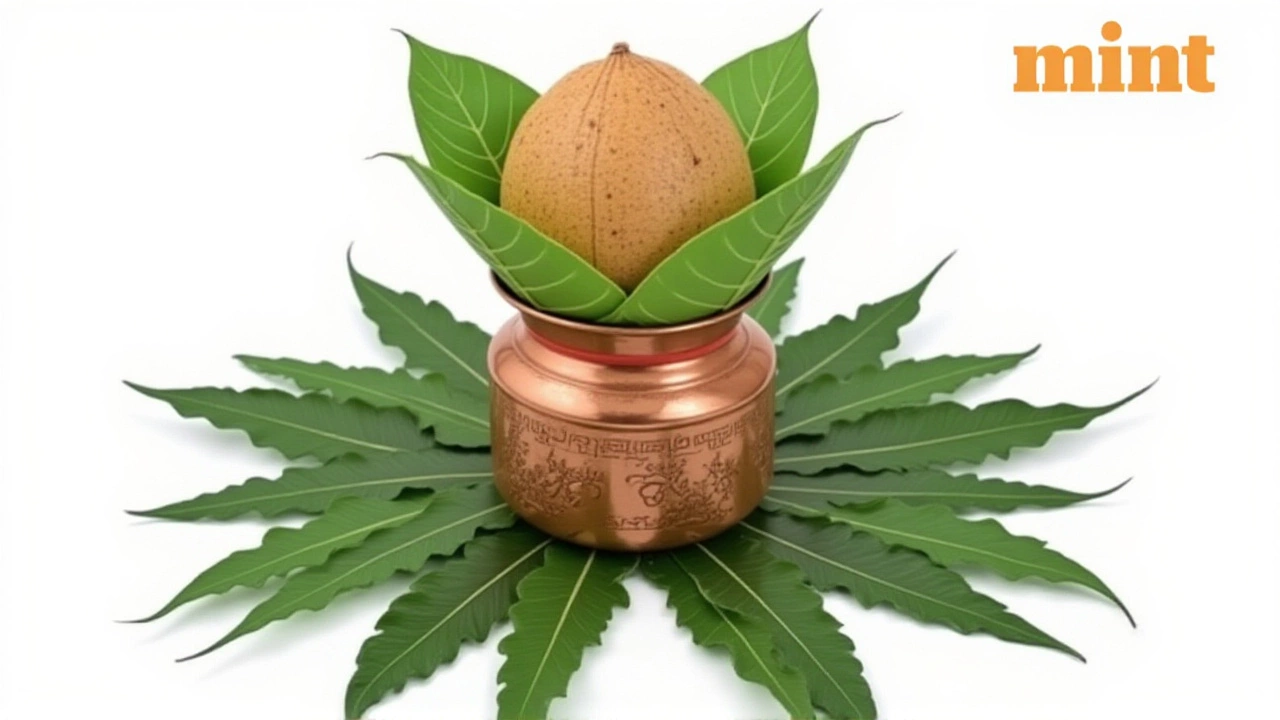Kalash Visarjan: Meaning, Steps, and Related Hindu Rituals
When you hear Kalash Visarjan, the ceremonial immersion of a decorated pot filled with sacred items at the end of a religious event. Also known as Kalash Immersion, it signals the closure of a worship cycle and the release of divine blessings back to nature. This act isn’t just a splash of water; it’s a symbolic journey of devotion, meant to carry prayers to the celestial realm.
In most cases, Puja, a structured worship ceremony involving offerings, chants, and rituals culminates with Kalash Visarjan. The puja creates a sacred space, and the kalash serves as a vessel for that sanctity. Once the rituals finish, the immersion releases the stored energy, completing the spiritual loop. This connection shows how Kalash Visarjan requires a prior puja to give it purpose.
Key Elements of Kalash Visarjan
The central element is the kalash itself—a copper or earthen pot crowned with mango leaves and a coconut. Inside, practitioners place rice, flowers, and a small idol or a scripture. Ganga water, water drawn from the sacred Ganges River is poured over the pot to sanctify it. The flow of Ganga water is believed to amplify the prayers and cleanse the participants. When the kalash is taken to a river, lake, or sea, the water acts as a conduit, carrying the intentions to the divine.
Timing matters too. Many festivals schedule the immersion on the final day. For example, the nine‑day Navratri celebration often ends with a grand Kalash Visarjan on the tenth day, called Vijayadashami. Navratri, a nine‑night festival honoring the goddess Durga uses the kalash as a focal point for daily worship, and its immersion marks the triumph of good over evil. This seasonal link illustrates how Kalash Visarjan encompasses Navratri’s narrative arc.
Another major festival that features Kalash Visarjan is Maha Shivaratri. Devotees set up a kalash with lingam symbols and chant Shiva’s mantras throughout the night. At dawn, they immerse the pot, believing the act frees Shiva’s blessings into the universe. This shows a pattern: Kalash Visarjan connects different festivals by providing a common closure ritual. Whether it’s Navratri, Shiva worship, or local community events, the immersion unites them under a shared spiritual vocabulary.
Beyond festivals, the practice appears in personal milestones—births, housewarmings, and even corporate inaugurations. In each case, the kalash holds a specific intention: prosperity for a new home, health for a newborn, or success for a business venture. The immersion then transforms those personal hopes into a collective offering, linking individual goals to the larger cosmic order.
Practical tips help newcomers perform Kalash Visarjan respectfully. First, choose a clean, natural water body—rivers, ponds, or the sea are ideal. Second, ensure the kalash is sturdy; breakage can be seen as an inauspicious sign. Third, accompany the immersion with a simple prayer or mantra; this reinforces the intention and honors the ritual’s sacredness. Finally, dispose of the leftover items responsibly—some communities compost the rice and flowers, turning the ritual’s remnants into nourishment for the earth.
By now you’ve seen how Kalash Visarjan ties together puja, sacred water, festival cycles, and personal milestones. Below you’ll find a collection of articles that dig deeper into each of these facets—whether you’re curious about the exact steps, the symbolism behind the mango leaves, or how the ritual adapts across regions. Dive in to see the breadth of coverage and pick up actionable insights for your own practice.
Shardiya Navratri 2025: Deciding the Kalash Coconut's Fate
As Shardiya Navratri 2025 ends, families decide whether to eat or immerse the kalash coconut—guided by regional customs, scriptural advice, and expert insights.
Read more